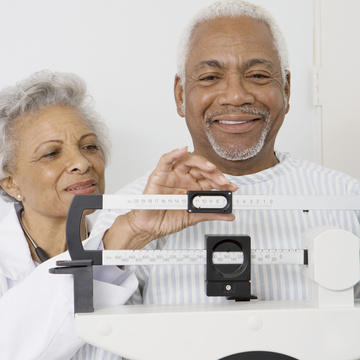Grappling with Obesity: Strategies that Work

It’s one thing to talk about the worldwide obesity epidemic, but it’s another to look at the staggering numbers. According to the World Health Organization, obesity rates across the globe have nearly tripled since 1975. The prevalence of obesity among adults in the United States alone was 39.8 percent in 2015–2016. Although much of the conversation around obesity focuses on physical appearance, the effects of obesity on personal and public health are cause for considerable concern.
Personal and public health consequences of obesity
First, there’s the financial impact. According to the U.S. Centers for Disease Control and Prevention, the estimated annual cost of health care for obese individuals in the United States is $147 billion; the average annual cost for an obese individual is $1,429 higher than someone with normal body weight.
But being overweight or obese is also a direct threat to health.
“The leading cause of death in the United States is heart disease, and your heart is the size of a fist. As you add more weight, the heart has to work harder to pump blood, and that leads to coronary artery disease, increased risk of stroke, and increased risk of kidney failure,” says James “Rusty” Harrington, a ChenMed physician at the JenCare Senior Medical Center in South DeKalb, Ga.
In addition to heart disease, being obese contributes to the development of diabetes and can increase an individual’s risk for immune problems, joint disease, chronic obstructive pulmonary disease (COPD), sleep apnea, and almost all types of cancer.
Despite the prevalence of obesity and the consequences of being significantly overweight, Harrington sees room for optimism. Obesity is highly treatable, particularly in a value-based primary care environment where a high-touch model focuses on improving health and disease prevention.
Obesity-fighting strategies that work
The first step? Bodyweight is a fraught topic for many people, so Harrington likes to start patient conversations by focusing on personal health.
“Lecturing doesn’t work. Talking about their health opens the door,” he says. “I invite this conversation by asking them, why do you want to be healthier?”
Reasons he’s heard include a desire to get off medicines for diabetes or hypertension, easing joint pain, and better managing stress. “When we understand everything that’s going on, we’re going to be more successful together,” he says.
Harrington’s tried-and-true strategy for helping patients lose weight isn’t rocket science: It’s diet and exercise.
“Medications, pills, and surgery all have side effects — the lowest risk is to work on diet and exercise. As Hippocrates said, ‘Let food be thy medicine and medicine be thy food,’” he says. He encourages most patients to transition to a plant-based diet and to start by figuring out what produce they like best. He instructs them to fill up on those foods before introducing small portions of others they like.
“A lot of patients come back with, ‘Well, you’re saying I can’t have fried chicken,’ or ‘I can’t have cake.’ No, I’m not,” Harrington says. “I’m saying ‘I want you to fill up on the healthy foods first.’”
Harrington stresses the importance of accountability in making weight loss work. He asks most obese patients to come into the office once a week for a weigh-in and asks them to keep a food journal to share during each visit.
“Many people come in thinking they’re eating healthy, but they’re not,” Harrington says. “The journal shows us what they’re eating, in what amounts, and we can see the nutritional value. It’s not about being confrontational — the whole point is for me to help them and educate them.”
Mrs. Q finds weight-loss success
Harrington highlights one of his patients — Mrs. Q — as an exemplar. They met in February 2018, when she weighed 256 pounds and explained her history of multiple chronic conditions: breast cancer, diabetes, hypertension, high cholesterol, and joint pain. Mrs. Q told Harrington how she was tired of suffering and how much she disliked the side effects of her many medications. Harrington recommended a plant-based diet with occasional fish for protein and light exercise. She kept a food journal and made regular visits to Harrington’s office. Mrs. Q brought her weight down to 236 pounds by December 2019 before it crept up slightly during the holidays. But Harrington wasn’t dismayed.
“She noticed after she gained a little bit of the weight back, her joints were starting to get achy again. She knew she felt better when she was doing the exercise, so she’s motivated to get back on track,” he says.
That motivation, Harrington says, is the key to overcoming obesity.
“Diets and pills don’t work most of the time, because people go back to their old habits afterward,” he says. “What is it you want to do — to lose weight or be healthy? When you know you feel better making healthier choices, it helps you get over that inertial hump and start moving toward something you can maintain.”
A care model that emphasizes prevention, close relationships with patients, and significantly smaller patient panels than the national fee-for-service average allows physicians to truly work with patients to achieve their goals for better health. ChenMed’s value-based care model focuses on disease prevention, outcomes, and building relationships with patients. Want to learn more? Check out our available positions.



